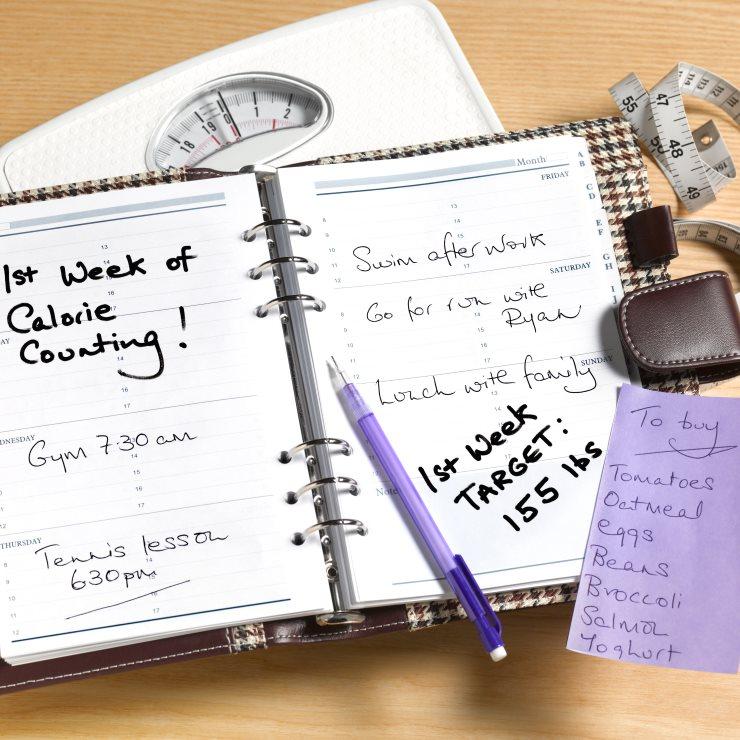How to Increase Your Metabolism
Metabolism is the rate at which your body process the food that you put into it. If you're trying to lose weight, increasing your metabolic rate may help you to lose more weight without cutting more calories. The commercialism surrounding "metabolism-enhancing products" has made it difficult to separate fact from fiction (or advertising), but there are some simple strategies that have been shown to be effective. Keep reading to learn how to increase your metabolism.
Steps
Method 1 Increasing Your Metabolism with Diet
-
1
Eat small, frequent meals throughout the day. Extending the time between meals makes your body go into "starvation mode," which decreases your metabolism as a means to conserve energy and prevent starvation. While some people are able to lose weight through intermittent fasting, most people generally eat less overall when they eat small, frequent meals. In addition to having four to six small meals per day, eating healthy snacks will also increase metabolism.[1]
- Packing extra non-perishable snacks and keeping them on you is helpful. You never know when a train will be delayed or when you'll be stuck at the office. If you allow yourself to get hungry, you'll end up eating something you shouldn't and your diet will go out the window.
-
2
Choose lean proteins. Eating a diet rich in lean proteins will increase your metabolism because it takes more energy for your body to digest the protein. Choose lean proteins like turkey, fish, eggs, beans, and tofu.[2]
- Cottage cheese is a good source of casein protein. Eating cottage cheese, particularly before bed, is a good idea because it releases slowly into the body, and as a result, your metabolism is working all night.
-
3
Add spice to your favorite foods. Adding spicy peppers, crushed red pepper flakes, or cayenne pepper to your recipes can help increase your metabolism. The effects of eating spicy foods are only temporary, but you can add a little spice to one or more of your meals every day to keep getting the metabolism boosting benefits.[3]
- Hot sauce is another great addition to any meal. Not only does it help to increase your metabolism, but it doesn't have many calories, if any (depending on brand).
- Keep in mind that although spicy foods do increase metabolism, they only increase metabolism by about 8%, so it is still important to watch your calories if you are trying to lose weight.[4]
Method 2 Increasing Your Metabolism with Exercise
-
1
Get at least 30 minutes of aerobic exercise every day. Aerobic exercise burns calories while you are doing it and keeps your metabolism elevated even after you finish. If you have a hard time fitting in 30 minutes at once, do your aerobic exercise in smaller intervals, like 5, 10, or 15 minute sessions.[5]
- When you start incorporating exercise (if you are not used to exercising regularly), you will notice that you are more hungry. That is absolutely ok! Your body is just telling you that it needs more fuel to keep up with the new increased expenditure of calories.
-
2
Add strength training to your exercise regimen. Building muscle helps raise your resting metabolism. A pound of muscle burns six calories per day while a pound of fat burns only two calories per day. This may not seem like much, but the amount of calories that your body burns while resting will add up over time. [6][7] Muscle burns more calories than fat does (73 more calories per kilogram per day, to be exact) so the more muscle you build, the higher your resting metabolic rate (RMR) will be. Every muscle cell that you gain is like a little factory that constantly burns calories for you, even while you sleep, and revs up when you exercise.
- This is the only way to increase RMR, which accounts for 60 to 70 percent of the calories you burn daily.[8]
- 3 Look for little ways to get extra exercise. The more you move, the higher your metabolism will be, so look for small opportunities to move more as you go through your day. For example, you could take the stairs instead of the elevator, park further away from the entrance at the grocery store, or ride your bike to work instead of driving.[9]
Method 3 Finding Other Ways to Increase Your Metabolism
- 1 Drink plenty of water. Studies have shown that by increasing the amount of water that you drink, you can also increase your metabolic rate by as much as 40%. This increase may be a result of your body’s attempt to heat the water that you are ingesting, but the reason for the increase is unclear.[10] Our bodies also often confuse thirst and hunger, so it is important to stay hydrated for that reason as well.
- 2 Drink coffee. Coffee has been shown to increase metabolism because of the caffeine content. One study showed that drinking coffee significantly increased the metabolic rate of both normal weight and obese subjects.[11] Keep in mind that the metabolic effects of caffeine are small compared to other measures like exercise.[12] Excess consumption of caffeine can also cause nervousness, insomnia, and other negative side effects.[13]
- 3 Drink green tea. Combining green tea (even decaf green tea) with diet and exercise can improve your metabolic rate. One study showed that combining decaffeinated green tea extract with exercise created more dramatic results than exercise alone.[14] Consider adding decaffeinated green tea extract or drinking a cup or two of green tea as a complement to your diet and exercise regimen.
- 4 Follow a healthy diet, not a crash diet. Crash diets dramatically restrict your caloric intake, which can have a negative effect on your metabolism. Even though you may experience some initial weight loss from a crash diet, crash diets ultimately slow down your metabolism and often lead to gaining more weight after the fact. Crash diets can also cause you to become deficient in some important nutrients due to the limitations that they place on the variety of your food intake.[15]
Method 4 Understanding Your Metabolism
-
1
Determine what is influencing your metabolism. Your metabolism is affected by a variety of factors. There are several factors that you can control and change, and some factors that you can't.
- Age - Metabolic rate decreases 5% each decade, after the age of 40 [16], partly because of decreased muscle mass.
- Gender - Men generally burn calories more quickly than women because they have more muscle tissue.
- Heredity - You can inherit your metabolic rate from previous generations.
- Thyroid disorder - Hypothyroidism (underactive thyroid gland) and hyperthyroidism (overactive thyroid gland) can slow down or speed up metabolism. Talk to your doctor if you think you might have a thyroid disorder. This is especially important for women. Hormones and other factors can greatly increase the effort it takes to lose even a small amount of weight, and often conditions like PCOS go undiagnosed.
- Weight - Different tissues of your body contribute different amounts to resting metabolism. Muscle contributes more than fat per unit mass and, because it is denser than fat, muscle contributes much more per unit volume.[17].
- Body size - Metabolic rate increases as weight, height, and surface area increase.
- Body composition - Fat tissue has lower metabolic activity than muscle tissue. As lean muscle mass increases, metabolic rate increases.
- Climate and body temperature - The base metabolic rate of people in tropical climates is generally 5 to 20 percent higher than their counterparts living in more temperate areas because it takes energy to keep the body cool. Exercise performed in hot weather also imposes an additional metabolic load. Body fat content and effectiveness of clothing determine the magnitude of increase in energy metabolism in cold environments; it takes energy to keep the body warm if you work or exercise in very cold weather.
-
2
Estimate your resting metabolic rate (RMR). RMR is often used interchangeably with basal metabolic rate (BMR). Although they are slightly different, estimating either is sufficient for the purpose of losing weight. What these equations will show you is, that if you weigh more, your RMR will be higher! To calculate your RMR, use the Mifflin-St Jeor equation (which is more reliable than the Harris-Benedict equation[18]). There are also calculators online that can do this for you:
- RMR = 9.99w + 6.25s - 4.92a + 166g-161
- w = weight in kilograms; if you know your weight in pounds, divide by 2.2 to get your weight in kilograms
- s = height in centimeters; if you know your height in inches, multiply by 2.54 to get your height in centimeters
- a = age in years
- g = gender = 1 for males, 0 for females
- RMR = 9.99w + 6.25s - 4.92a + 166g-161
-
3
Recalculate your RMR as needed. Your metabolism will slow down as you lose weight. The more weight your body is carrying, the more calories your body has to burn in order to sustain itself, even at rest. When you begin restricting your calorie intake, you'll lose weight relatively easily because your body's high caloric needs are not being met. But after you begin to shed the weight, the body has less mass to carry and thus needs fewer calories. In order to continue losing weight, you will have to restrict your caloric intake even further in order to maintain a difference between what your body needs and what you are providing. Let's go through a hypothetical example:
- You are 200 lbs and your body needs 2500 calories a day to sustain itself. You cut down your caloric intake to 2000 calories.
- You lose 25 lbs. Now your body only needs 2250 calories to sustain itself because it's carrying less weight.
- If you continue with your 2000 calorie per day diet (the diet that helped you lose the first 25 lbs) you will still be losing, but at half the speed. In order to maintain a steady weight loss you will need to reduce your caloric intake further. However, it is at the utmost importance you do not try to consume fewer calories than your RMR!
- No two people are the same, so there is no "one size fits all" caloric total. While the Harris Benedict Equation is universally accepted and as close to accurate as possible, you may need to experiment with your caloric intake to get the exact number that works best for you. Lowering your caloric total is not recommended unless you do not see change for two weeks. You need to give your body time to adapt.
-
How to Gain Weight and Muscle
When you want to gain both weight and muscle mass, you will need to m
-
Most Optimized and Active Solutions to Weight Loss
While there are plenty of methods and practices to get rid of excess w
-
Choosing a Swimsuit to Enhance Your Beauty
Choosing a Swimsuit can be a frustrating but necessary part of c
-
How to Lose 60 Pounds
People have a wide variety of reasons to lose weight. Some attempt we
-
Creative Weight Loss Is Just A Few Great Tips Away!
TIP! A great way to help stick to your weight loss goals is t
-
Mindful Weight Loss.
Effective weight loss will never happen without setting the proper g
- DON'T MISS
- How to Lose a Pound a Day
- Fast Weight Lose - Top Ten Weight Loss Tips
- The Fascinating Relationship Between Bipolar Disorder and Weight
- Basic Weight loss & Diet Tips (1 to 10)
- The Loss Of Hair Tips You Can Try Out Today!
- 6 Exercise For Fast Weight Loss At Home
- Weight Loss Surgery Comparison
- 7 Natural Weight Loss Tips
- How to Drink Tea to Lose Weight
- 5 Healthy Habits That Can Make You Gain Weightvar zeus = zeus




